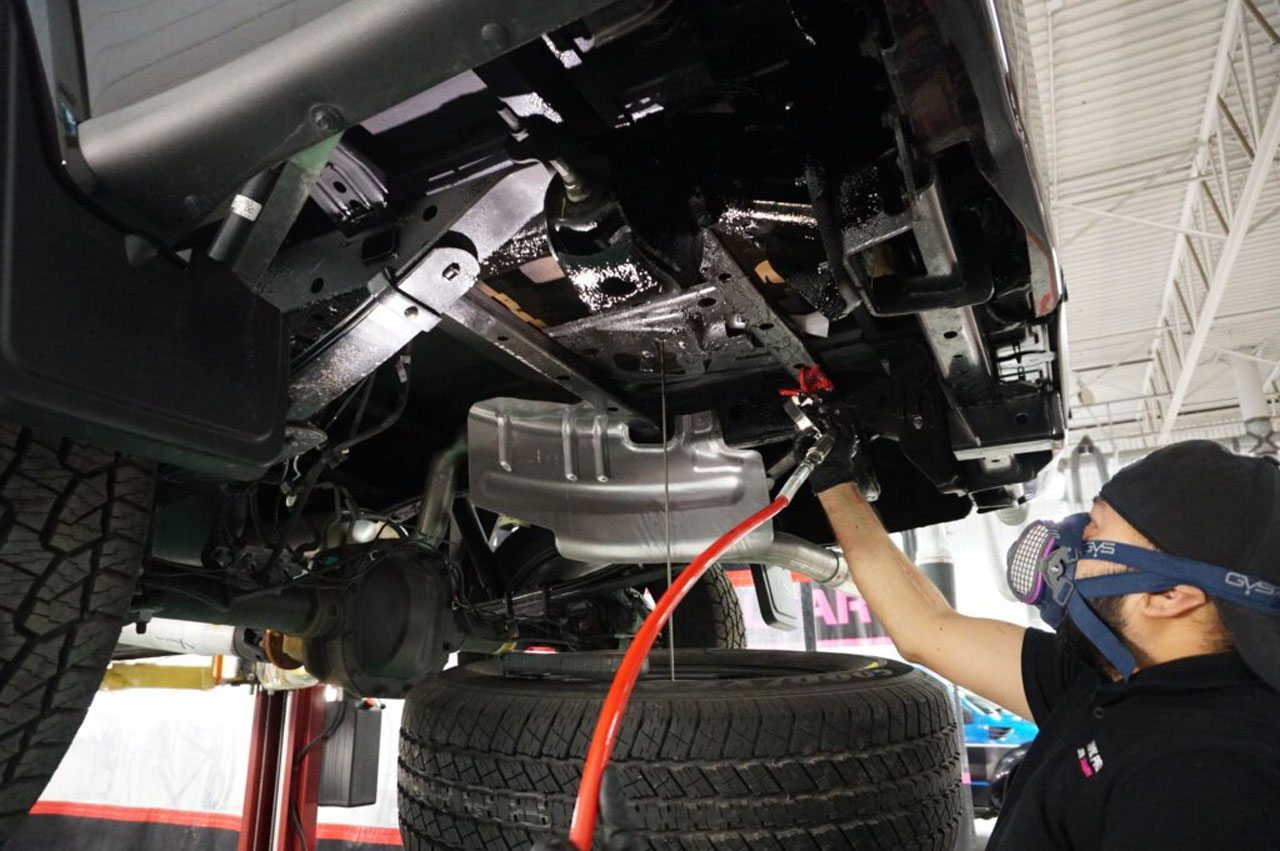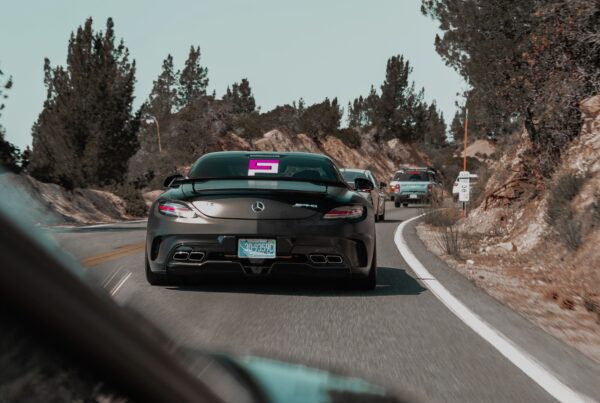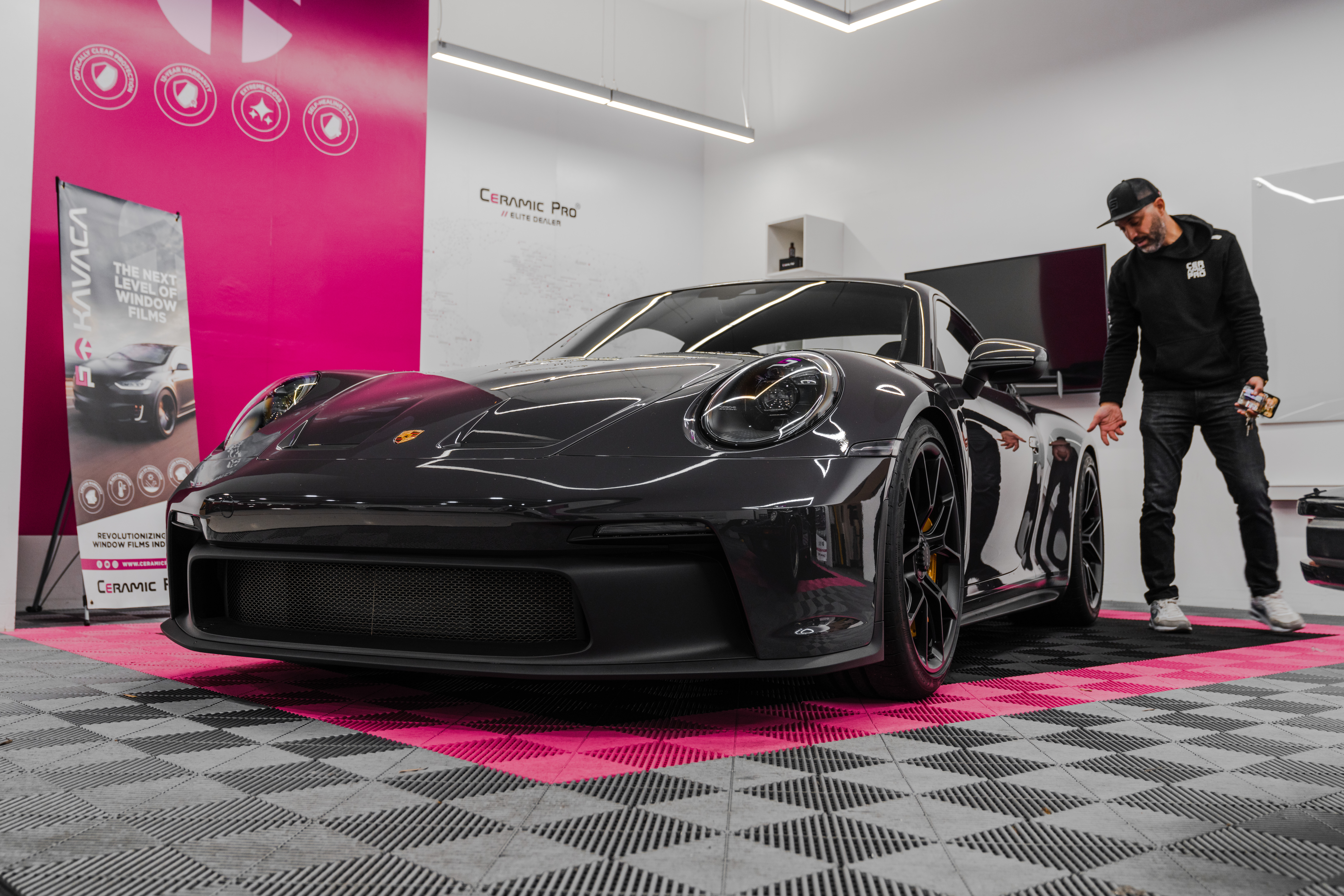The days of daily driving rust buckets are quickly fading away. Most modern production trucks, cars, and SUVs are built using plastics and other materials meant to prevent rusting. However, rusting or the creation of oxidation and corrosion is still possible. This inspires many car dealerships to offer protective coatings on the surface and under-carriage as an ‘upgrade’. But can you by-pass that and use a ceramic coating to prevent rust?
The ceramic coat industry is flooded with a plethora of different grades, formulations, and application methods. Some of them are intended to be applied by spraying on the surface, then buffing off with a microfiber towel. Others are DIY nano coatings – or watered-down versions of professional Ceramic Pro 9H coatings.
Regardless of which one you choose – being proactive about paint protection products and choosing one that offers you the most bang for your buck is always the smartest path to travel.
You might be wondering whether it’s worth it to have a Ceramic Pro auto detailing professional apply a ceramic coating to your car paint – just for the purpose of rust protection. In this article, we will discuss ceramic car coating and rust protection in-depth and help you learn the benefits of using a ceramic coating to reduce rusting caused by the blending of iron and oxygen.
What Causes a Vehicle’s Paint to Rust?
The chemical formulation of rust is Fe2O3 XH20 – or hydrated ferric oxide. Rust is the byproduct of corrosion – which is a chemical process where an electrolyte (a material that helps speed up the movement of electrons), an anode (something that gives up electrons easily, like metal) and a cathode (something that accepts electrons easily) combine.
The modern car paintjob is a multiple-stage process, involving a base primer or sealant, the paint coatings (or the pigment), followed by the clear coating (which produces the finish). Once the factory paint job has cured (usually about a month), a protective coating can be applied.
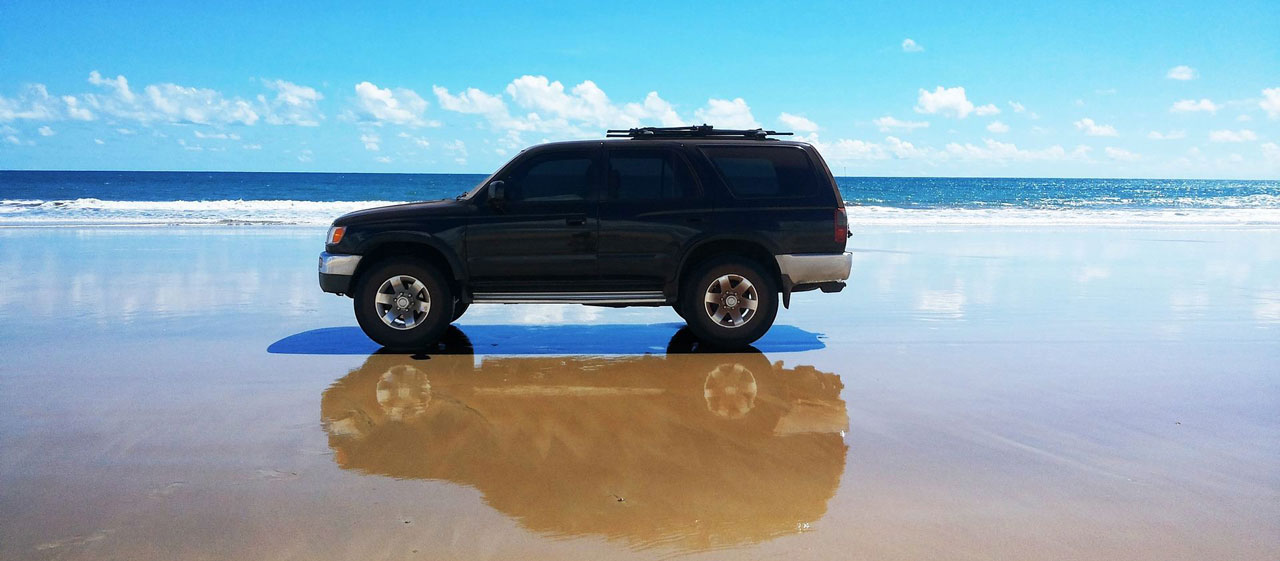
While driving on the beach on a sunny afternoon is relaxing, cool, and convenient, constant exposure to saltwater can accelerate corrosion and the creation of rust.
If the car’s paint is scratched or damaged, due to constant exposure to harmful elements, each layer of the vehicle’s paint job will begin to deteriorate. Once it reaches bare metal, the corrosion process begins – and eventually develops rust.
Pretty simple – huh?
Well, the trick is to avoid this situation whenever possible. Most car owners choose to have a professional-grade paint protection product applied to their vehicle’s exterior. Whether they choose traditional car wax, a paint sealant, or the multiverse of ceramic coating solutions, the goal is to build a hard shell over the paint surface – to reduce scratching, oxidation, corrosion, and eventually – rust.
What is Water’s Role in The Development of Automotive Rust?
For rust to form, there are three things needed: iron, oxygen, and water. Whenever water meets iron and oxygen, two things happen. The water first mixes with carbon dioxide in the atmosphere which creates an electrolyte. This electrolyte slowly dissolves iron until it breaks down into oxygen and hydrogen. Once this happens, the electrons start leaving and bond to other metals, forming iron oxide.
Again – to reduce the potential of water penetrating the painted surface of a car, a protective coating or paint protection film is applied.
Why Does Acid Rain or Saltwater Cause Rusting on Cars?
Since rust is formed by water encountering iron and oxygen and creating an electrolyte which triggers the corrosion process, the stronger the electrolyte, the more likely there is for rusting to occur. It turns out that things like acid rain, saltwater, and road salt have high levels of electrolytes and thus contributes directly to making more corrosion occur.
Since rust forms if there are electrolytes, a cathode, and an anode, it is common to see rust on vehicles and other automotive equipment since all of these are present. Water and even just increased humidity and moisture are enough to form an electrolyte, and so cars in climates with higher levels of humidity often develop rust even if they are always covered by a car cover.
How is Rust Potential Reduced at the Factory?
Most car manufacturers charge customers a ‘rust-proofing’ installation charge, in which they apply an undercoat or spray coating to create a layer of protection on top of any exposed metals, to prevent water from coming directly in contact with it.
Nowadays, however, car manufacturers are doing more to try and reduce the risk of rusting from occurring, such as:
The Use of Rust-Proof Materials in Vehicle Construction: Many car manufacturers now use polycarbonate and plastic materials. Many years ago, a car’s bumper and lower body panel were the most susceptible to developing rust. Car owners would try to combat this by applying several layers of wax. Today, parts like this are simply made by polycarbonate or plastic materials, which are rust-proof.
Some car manufacturers are coming up with more creative ways of making their cars rust-proof. For example, the DeLorean has a body that is made of stainless steel (which is highly resistant to rust), and Corvettes are made of fiberglass which is fully rust-proof. Some Saturn cars were made with their side panels with plastic as well.
Paint and Primers with Rust-Resistant Properties
The paints and primers of vehicles that are still made with iron and steel components are often infused with synthetic ingredients which act as a water protectant to protect against the risk of corrosion. Unfortunately, however, if your car’s surface is scratched to where the scratch reaches the bare metal underneath, corrosion will still occur.
Factory Paint Sealants
The final step of protection from the factory is the application of a factory paint sealant. This is typically completed at the automotive manufacturing facility. They’ll also offer undercoating or exhaust coating products to protect components under the vehicle. These serve as a rust inhibitor that provides corrosion protection.
However, more dealerships are beginning to partner with professional ceramic coating or paint protection film installers to offer their services as a financing upgrade. When the vehicle has a coated surface, it blocks exposure to harmful contaminants and elements.
How Ceramic Coating Helps Prevent Rust Formation on Cars
Now that you know exactly what rust is, how it is formed, and what manufacturers are doing about it, you probably realize that despite manufacturers’ best efforts, you will still need to do something to prevent rusting on your own car.
Rust develops most often on metal components parts that are exposed to water, air, and salt such as those related to a vehicle’s suspension or brake calipers. A car’s metal body can also start rusting if the paint surface gets scratched.
Realistically, applying a anti corrosion coating to your car’s suspension parts, exhaust system, or on the undercarriage is overkill. Also, considering that these parts are nowadays often made with a metallic coating, this probably isn’t something you have to worry about.
The main area of concern is your car’s lower body panels, as these are most exposed to and often get coated with salt from the roads flung up by your tires. Applying a ceramic paint coating to this area would undoubtedly be helpful.
At this point you are probably wondering, how does a ceramic coating work to protect against the development of rust?
Ceramic coatings use nanotechnology that allows the ingredients within the coating to bond together to fill microscopic indentations and imperfections within porous materials such as your car’s clear coat, glass, bare metals, or plastic trims.
It creates an invisible protective shield that is scratch-resistant and water-repellant, blocking water and oxygen from penetrating through to the metal surface. Since water and oxygen are the main causes of corrosion and thus rusting, a ceramic coating directly acts to reduce the chance of rusting from occurring on your car.
How Does Ceramic Coating Work?
Ceramic coating is a concentrated liquid polymer, where the main ingredient is liquid Quartz, or silica dioxide (SiO2) – followed by titanium dioxide (TiO2), and a slew of other ingredients. When applied to your car’s surface, this coating seeps into your car’s clear coat (or any porous surface) and creates a super flat, smooth, hydrophobic surface.
After the coating cures, a semi-permanent protective layer is formed which protects your car’s paint surface by preventing UV rays from directly penetrating through to the clear coat. Also, the coating is fully transparent, so it acts as an amplifier of the natural color of your car’s paint.
Since the particles within ceramic coating are microscopic, they can seal all the tiny pores on your car’s surface. As such, it leaves you with a smooth, protective layer that is hydrophobic (water-resistant), UV resistant, scratch-resistant, chemical-resistant, offers protection against extreme heat, and can even protect against spray paint.
Ceramic coating also blocks contaminants from encountering metal and causing corrosion.
To sum up, here are some of the biggest benefits of applying a ceramic coating to your car:
- UV resistance: By deflecting UV rays from penetrating directly into the paint surface of your car, there is less potential for molecular breakdown and oxidation. Additionally, the extra protection against rock chips, road salt, gas, and oil all mean a decreased likelihood of paint damage.
- Strong, protective layer: A layer of ceramic coating is a solid, smooth layer of fully transparent glass that naturally makes your car appear shiner, glossier – even more so than some of the best sealant or wax products. Ceramic coating also protects your car’s paint and provides resistance against many contaminants such as dirt and grime.
When you opt for a DIY coating, the results are mixed – as there are multiple variables, such as prep work, application techniques, weather, and skill that will directly impact the quality and longevity of the product.
Why It Makes Sense to Choose Ceramic Pro 9H Nano Coatings
If you live in a region that is prone to developing rust, such as cold weather climates that use magnesium chloride to melt ice, or coastal communities with saltwater, a nano ceramic coating can significantly reduce the potential or rust.
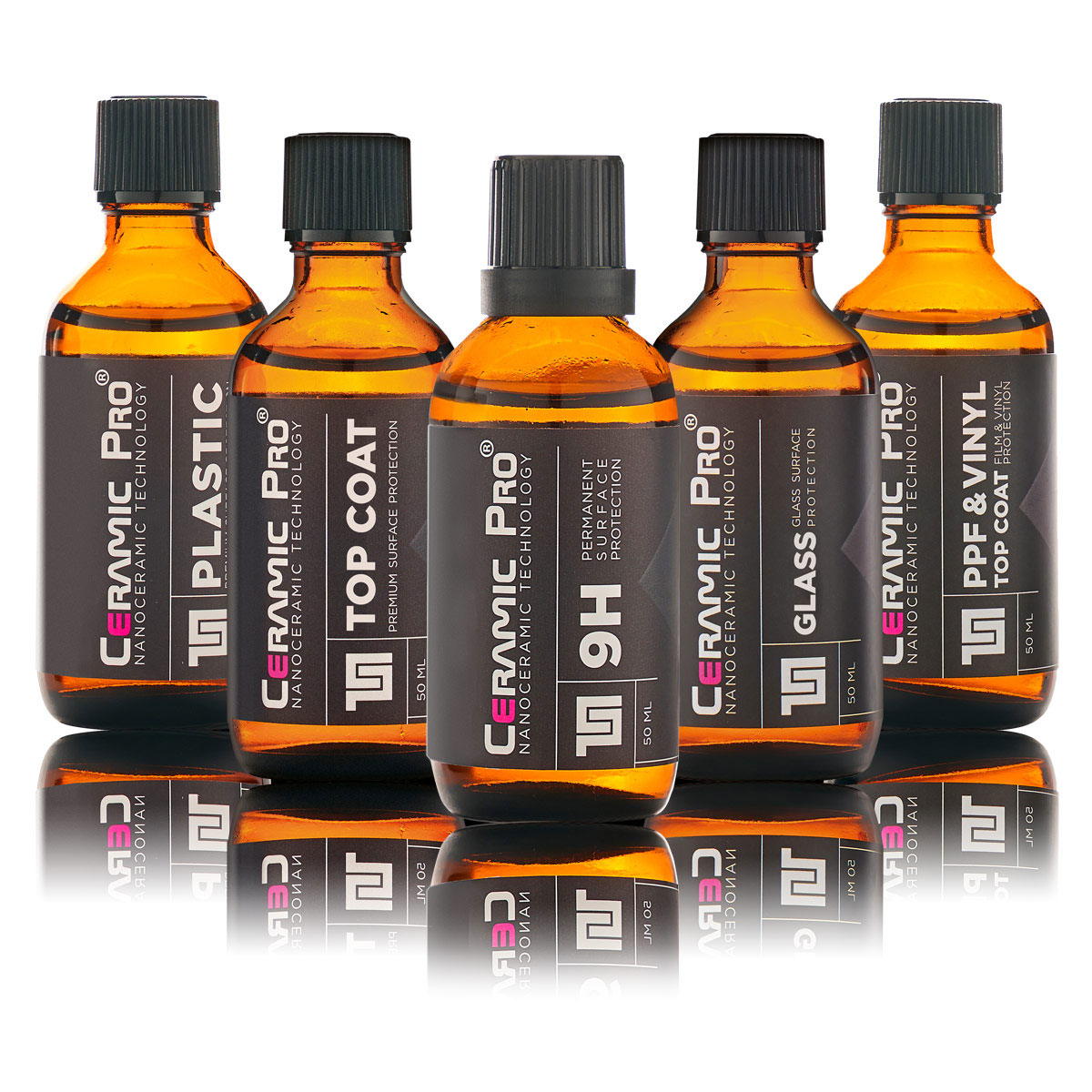
If you’re looking to maintain the quality of your factory paintjob, and reduce the potential of developing rust, click the button below to receive a free estimate for Ceramic Pro 9H.


